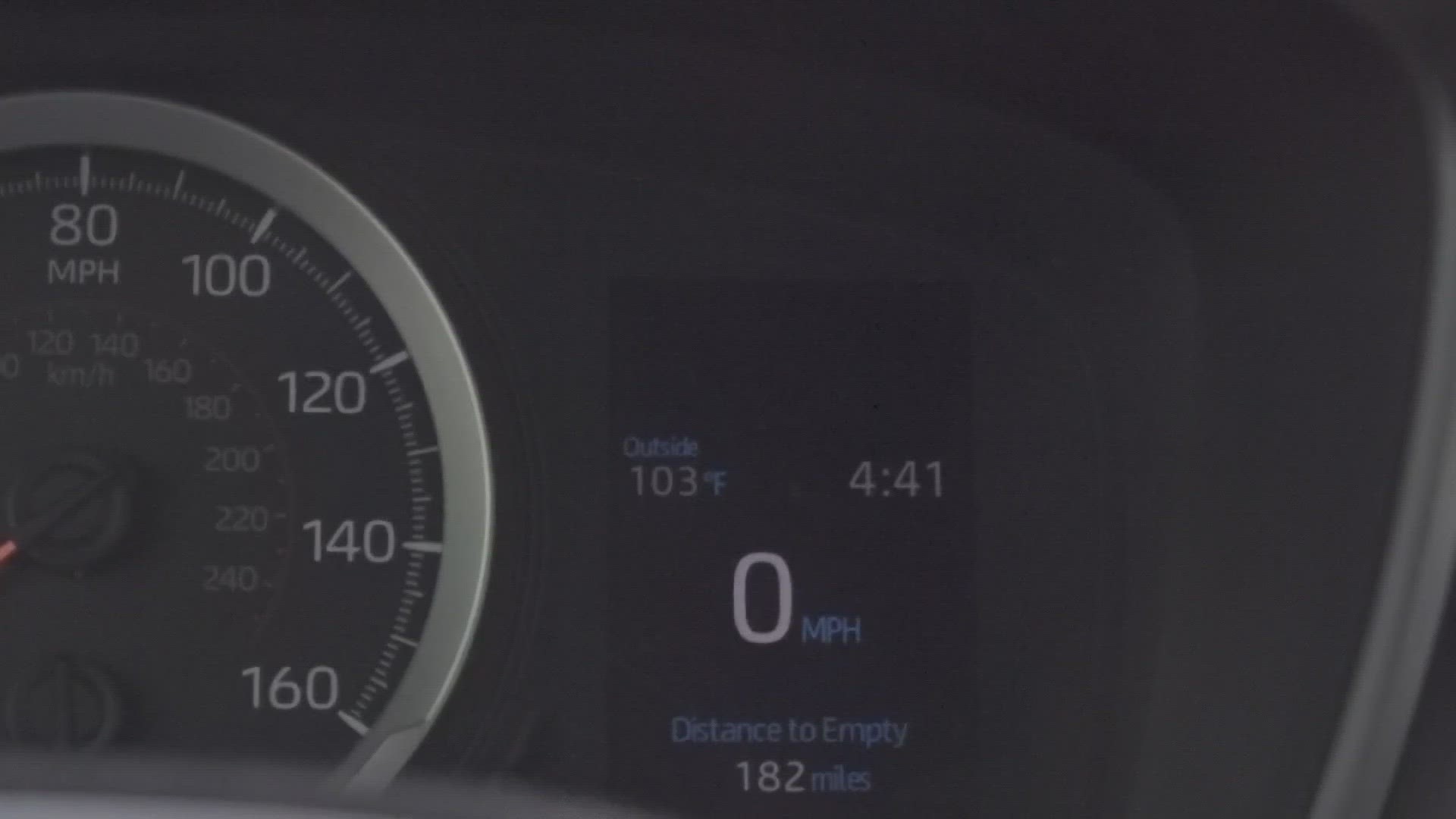ODESSA, Texas — Driving home on a hot summer day, you may look at the temperature on your dash and see 115+ degrees Fahrenheit.
This may make you wonder, is it really that hot outside? Well, in general, it can be assumed that no, it's probably not that hot outside. But the exact answer to that question is a little more complicated.
We'll start with analyzing the sensor that measures the temperature. The instrument used is called a thermistor, which is different from a thermometer.
A thermometer measures temperature with the expansion and rising of mercury, while a thermistor observes electrical current, which changes with temperature.
The thermistor itself is actually pretty accurate, so that's not really the problem. The problem is with where the thermistor is located in your vehicle.
You'll find the thermistor located in behind the grill of most vehicles, sitting just in front of the radiator. At this location, the heat from the engine has little effect. It's the heat from the ground that causes issues.
Asphalt can heat up to 160 degrees Fahrenheit on hot summer days. This is because asphalt is a great absorber of the sun's rays, absorbing up to 90% of its energy.
The asphalt then emits energy back up into the atmosphere, which is basically what you see when a mirage forms on long roads.
The air above asphalt can be as much as 10-15 degrees warmer than the surrounding land. And because your thermistor sits not too far from the asphalt's surface, it records air that can be pretty hot.
So the long answer is that your car is measuring the temperature correctly, but it's measuring it in a location that's not a good representation to what people typically feel when they step outside.
Official weather stations that are set up in the shade and at about 2 meters above the ground are used to measure the "real" temperature.
Stations that record temperature in proper locations are much more immune to external factors, such as heat radiating from the road, and can provide a better representation of what people experience.

